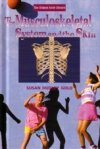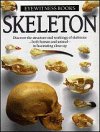Strong Bones for Life Additional Information
Try an experiment that takes calcium out of a bone: http://www.sciencenewsforkids.org/articles/20030723/LZActivity.asp.
Sohn, Emily. 2003. Prime time for broken bones. Science News for Kids (Oct. 8). Available at http://www.sciencenewsforkids.org/2003/10/prime-time-for-broken-bones-2/.
______. 2003. A framework for growing bone. Science News for Kids (April 30). Available at http://www.sciencenewsforkids.org/2003/06/a-framework-for-growing-bone-3/.
You can learn more about bones at ktca.org/newtons/14/bones12.html (Newton’s Apple, KTCA-TV) and www.kidshealth.org/kid/body/bones_SW.html (KidsHealth for Kids).
Information about the skeleton can be found at yucky.kids.discovery.com/noflash/body/pg000124.html (Discovery Channel).
For girls, you can learn more about calcium and bone strength at www.cdc.gov/powerfulbones/index2.html (Centers for Disease Control and Prevention).
Milk Matters: Games and Activities
www.nichd.nih.gov/milk/kidsteens.cfm
National Institute of Child Health and Human Development
Kids and Their Bones: A Guide for Parents
www.niams.nih.gov/hi/topics/osteoporosis/kidbones.htm
National Institutes of Health
Books recommended by SearchIt!Science:
 |
The Musculoskeletal System and the Skin — Susan Dudley Gold
Published by Enslow Publishers, 2003.
“Picture a house being built,” begins this book on the musculoskeletal system, which compares the human skeleton to the framework that supports a house. The book’s first chapter explains the elements of the musculoskeletal system and how they work together—the axial skeleton, the appendicular skeleton; skeletal, flexor, and smooth muscles; and the skin. The second chapter describes joints, ligaments, the epidermis, and the dermis. Find out how the system works in the third chapter, which explains how we move. Learn about how the body maintains and repairs itself in the fourth chapter. A fifth chapter discusses ways of staying healthy, and the final chapter is filled with “amazing but true” facts about the musculoskeletal system. |
 |
Skeleton — Steve Parker
Published by Random House, 1988.
Under your skin, there are about 200 bones that support your body and allow you to walk, run, swim, and jump. This book describes the skeletons of human beings and other animals. The design of each skeleton allows the animal to move and function in specific ways. Some of the bones in birds are hollow and lightweight, for instance, which allow the bird to fly more easily. Detailed photographs of the skeletons of various animals show how the different systems of bones are structured. |
 |
Bones: Our Skeletal System — Seymour Simon
Published by William Morrow/HarperCollins, 1998.
The adult human body has 206 bones. A newborn baby has about 300 bones. Discover why an adult has fewer bones than a baby. Analyze an X-ray photo to find a broken bone. Examine images of the inside of the human body. Learn about cartilage, marrow, joints, and ligaments. This book describes the bones in the human body and looks at possible damages to bones and how these damages can be repaired. |
Power Words
bone 1. The hard material that forms the skeleton of most vertebrates. Bone provides protection for organs, such as the brain and heart, and serves as support for the muscles of the body. Bones are connected to each other by ligaments. 2. One of the parts of the skeleton in vertebrates. The bone of the thigh is called the femur. The bones of the forearm are the radius and ulna.
collagen The tough, fibrous protein found in bone, cartilage, skin, and other connective tissue. Collagen provides these body structures with the ability to withstand forces that stretch or lengthen them.
osteoporosis A condition in which the bones become porous and weak from loss of minerals, especially calcium.
Copyright © 2002, 2003 Houghton-Mifflin Company. All rights reserved. Used with permission.
